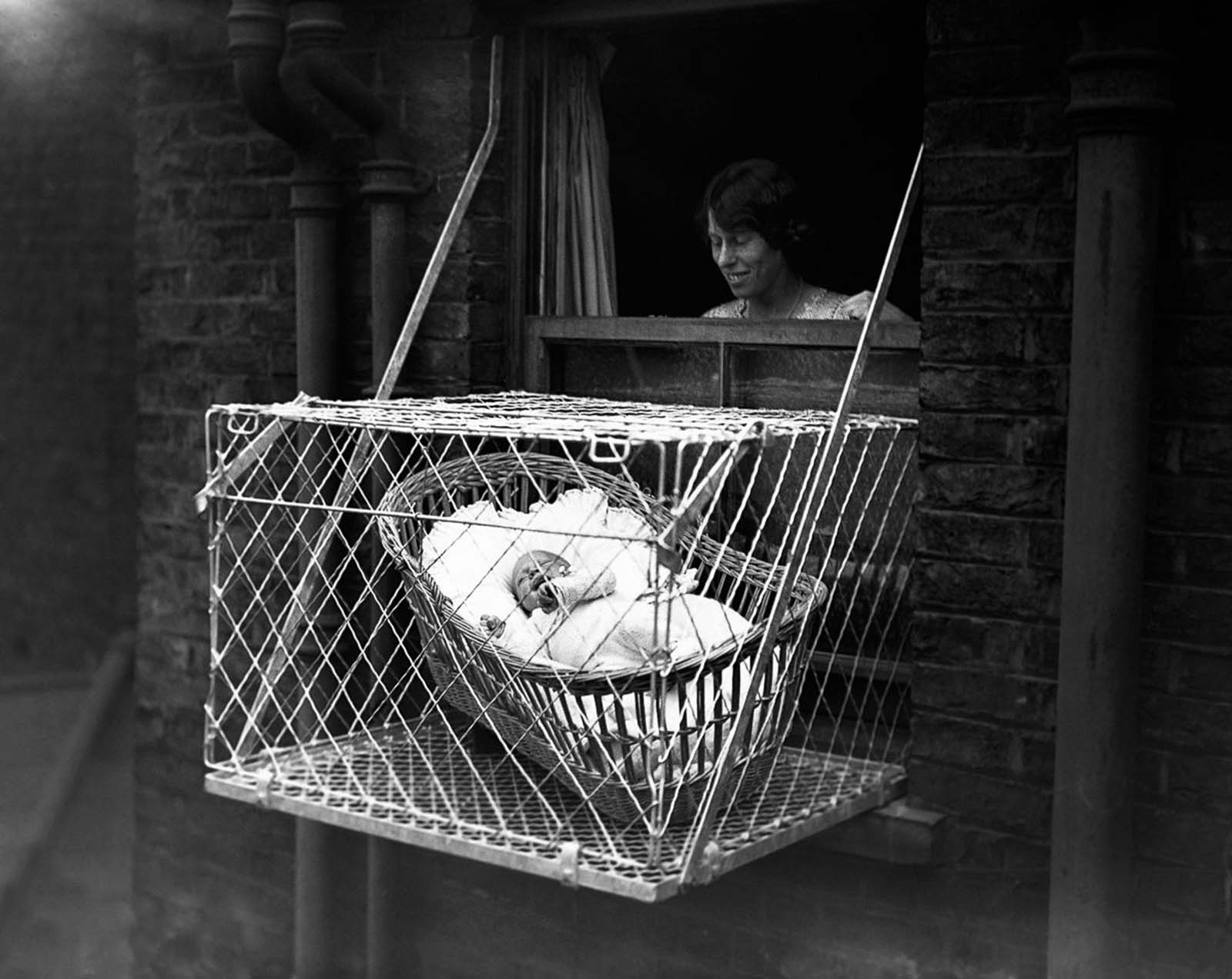Imagine a world where parents suspended their babies in cages outside apartment windows to ensure they received fresh air. This unconventional practice was indeed a reality in the 1920s when "baby cages" were introduced as a solution to the limited outdoor space available in urban settings. While the intention was to offer children the benefits of fresh air, the notion of placing a baby in a cage outside a window raises significant safety concerns and ethical questions.
In recent years, this peculiar invention has resurfaced in discussions, especially on social media platforms. As we navigate through the complexities of parenting today, it’s essential to reflect on these historical childcare methods and the lessons they teach us about child safety and well-being. The baby cage, patented by Emma Read in 1922, serves as a stark reminder of how far we have come in our understanding of infant care.
The concept of the baby cage was rooted in the belief that fresh air was vital for a child's health, particularly in crowded cities where outdoor access was limited. However, the dangers of such a practice are evident and highlight the need for safe and effective childcare solutions. As we delve deeper into the origins and implications of the baby cage, we can learn valuable lessons about the importance of safety, innovation, and the evolution of childcare practices.
Understanding the Baby Cage Invention
The baby cage was designed as a portable structure that allowed infants to be suspended outside an apartment building, giving them access to fresh air. This invention emerged during a time when urban living was on the rise, and many families faced challenges in providing adequate outdoor space for their children. The patent for the baby cage, issued to Emma Read, included detailed descriptions of its design and intended use, showcasing the innovative spirit of the time.
However, as we examine the implications of this device, we must consider the inherent risks involved. The idea of suspending a baby outside a window may seem outrageous by today's standards, but it reflects the historical context of parenting practices that prioritized outdoor access. In our modern era, we have learned that safety must always come first, and innovations in childcare should evolve to meet the needs of children without compromising their well-being.
The Legacy of the Baby Cage: A Reflection on Child Safety
The legacy of the baby cage serves as a critical reminder of the importance of child safety in all parenting practices. As this invention gained attention, it sparked debates about the ethical considerations of childcare methods. Today, we can draw valuable lessons from this history, emphasizing the need for safe environments for children to thrive.
In our quest for solutions to parenting challenges, we must ensure that innovations prioritize the well-being of our children. The baby cage stands as a testament to the evolution of childcare practices, urging us to reflect on the past while striving for a future where child safety is paramount. As we continue to innovate in childcare, let us remember the lessons learned from the baby cage and advocate for practices that nurture and protect our most vulnerable.
Key Takeaways
What You Will Learn
- The baby cage invention was a controversial solution to urban living challenges.
- Safety concerns are paramount in childcare practices and innovations.
- Reflecting on past childcare methods can inform better practices today.
- Child safety must always be prioritized in parenting solutions.
- Oprah Diddy Connection
- Massey Park California
- Patrick Flueger Relationship
- Preet Jatti
- Anton Lavey Daughter
- Kim Hye Yoon Husband
- Is David Jason Muir Married
- Aaron Pierre
- Simon Cowell Son Disability
- Daniel Jack Neeson




